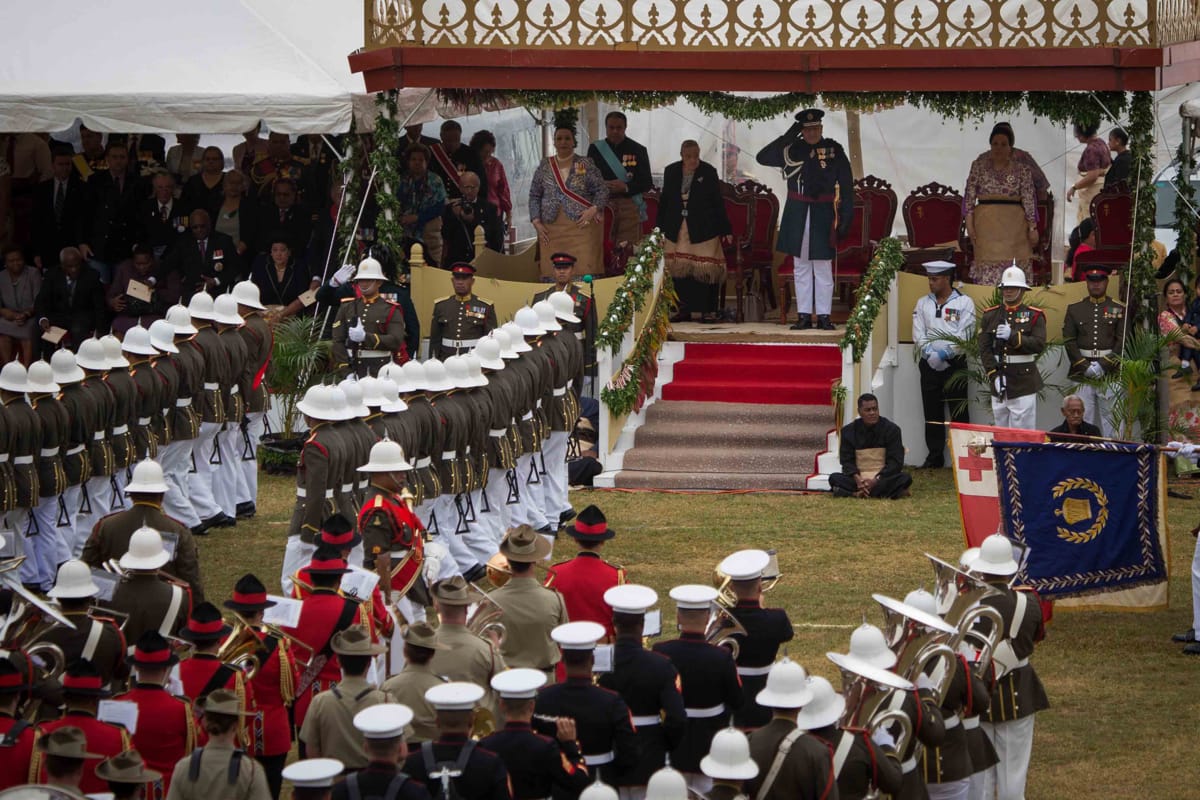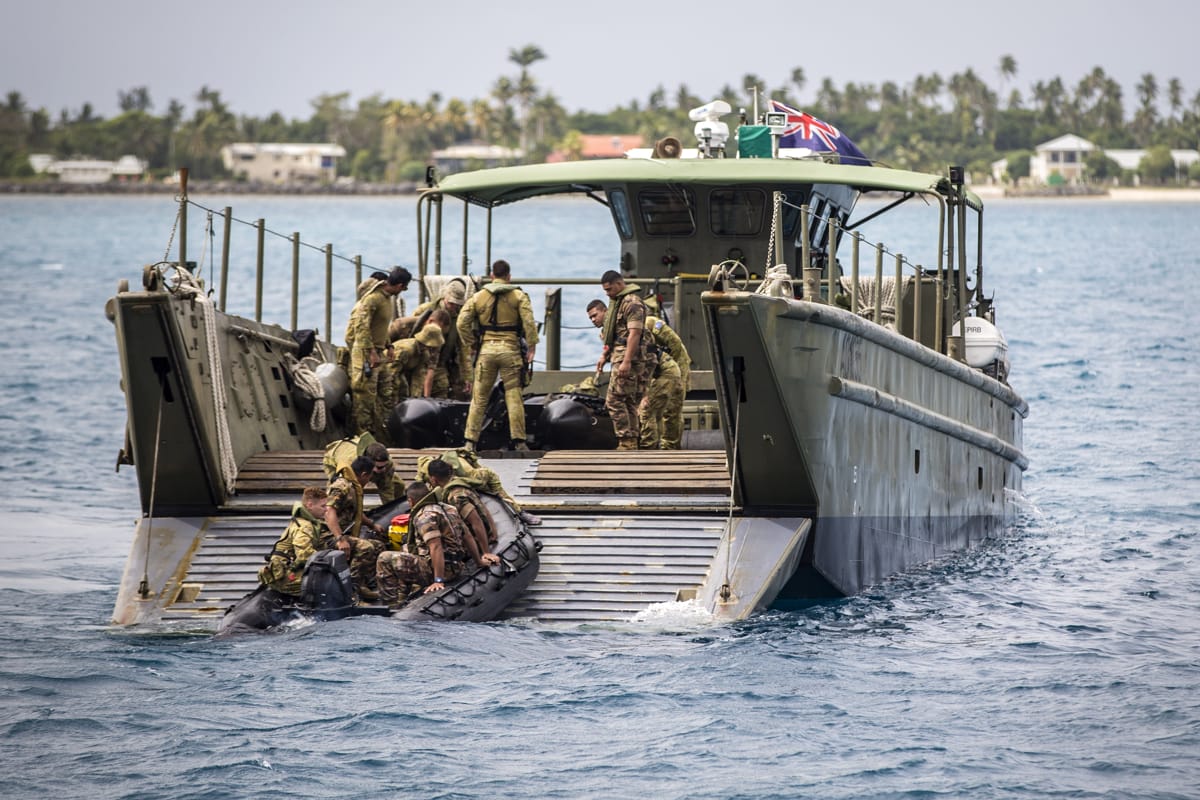Tonga is a unique country in many regards. It is illegal to exercise or do chores on Sundays and every Tongan high school has a brass band. Tonga was also the only Pacific country to avoid being colonised.
But Tonga’s military – with only 590 personnel including support staff, and today one of only three sovereign militaries in the Pacific – was not set up to deter potential aggressors from attack or to project power. Tonga’s military instead serves as an arm for peace and diplomacy.
To understand the way each of these anomalies is intertwined, we need to look back to the 19th century founder and unifier of modern Tonga, Tāufaʻāhau I.
Early attempts made by missionaries in 1797 to convert Tonga to Christianity were unsuccessful, with three missionaries losing their lives. However, the London Missionary Society persisted, and in 1831, Tāufaʻāhau I accepted Christianity. He was baptised and took the name King (Siaosi) George Tupou I, henceforth discouraging heathenry and promoting Christianity within the Kingdom.
With colonisation spreading across the Pacific region, Tupou I sought to protect his country and people from a similar fate. Both the Germans and United States were taking a stronger role in Samoan affairs, French influence was growing in Tahiti, and Fiji was soon to be annexed by the British in 1874. Tupou I was determined to secure Tonga’s independence and sovereignty.
The earliest iterations of HMAF were established to protect the country from colonisation – not through defensive armament, but through diplomatic recognition.
Rather than try to repel the colonial powers by force, Tupou I sought the advice of a few trusted missionaries, and devised a plan to achieve international legitimacy in the eyes of those who posed a threat to his nation. He established Western-styled governance, wrote the first Constitution, formed the Tongan Royal Guard, and introduced the 1850 Code of Laws that legislated biblical teachings and values (such as mandating the sabbath and banning all forms of work on Sundays). He then sought formal state recognition from the foreign powers whose growing presence in the region threatened Tongan autonomy.
In 1872, Tupou I asked a Wesleyan missionary, Reverend Shirley Waldemar Baker, to draft a constitution. Baker incorporated elements of the 1852 Constitution of Hawaii, the Laws of Government of NSW, and the Code of Laws of Tonga to create a constitution that enshrined Tongan interests, Christian values, and Western structures. The Constitution was finalised in 1875 and is especially notable as it represents a rare instance of a King who voluntarily granted constitutional liberties to his subjects, rather than in reluctant response to domestic instability or revolution.

The Tongan Royal Guard itself was established at the recommendation of missionaries in the 1860s with the purpose of granting legitimacy to the rule of the king as the head of state. It has since been through many iterations, including being transferred to the police (1905), being disbanded (1909), re-established (1911), complemented by the Tongan Defence Force (1939), merged with the Tongan Defence Force (1972), and renamed His Majesty’s Armed Forces (HMAF) in 2013. It is notable that by appointing the King as the Commander in Chief and through the Constitutional clause stating “it shall not be lawful for the King to make war without the consent of the Legislative Assembly”, HMAF aims to ensure it cannot be politicised or used in a coup or against the civilian population without the consent of both king and government.
HMAF personnel do receive basic infantry training to make them eligible for international peacekeeping operations, however few of the HMAF’s personnel are utilised in any offensive or defensive capacity. The HMAF is primarily responsible for Humanitarian Assistance and Disaster Relief (HADR), search and rescue operations, monitoring against illegal fishing, and delivering supplies to the outer islands.
It also plays an important role in the National Emergency Management Office (NEMO). This was evident following the 2022 Hunga-Tonga-Hunga-Ha’apai volcanic eruption and tsunami in helping evacuate people from the shoreline. In the immediate emergency response, HMAF delivered water to the inhabitants of the worst affected islands, Mango and Fonoi, and sent personnel to physically sweep the ash off the runway to allow the 42 international flights sending aid and supplies for the disaster response to land.

The most well-known wing of HMAF, however, is the royal band.
Retention of personnel poses a constant struggle for HMAF, with more and more young people leaving for Australia and New Zealand under the Pacific labour mobility schemes. Despite this challenge, recruitment for the band remains unwavering, with strong interest from the younger generations. As every high school in Tonga has a brass band, Tonga is home to incredible musicians and military band positions are highly sought after. Members of the band have opportunities to travel overseas to Australia and New Zealand, and even participate in the Royal Edinburgh Military Tattoo. They also perform domestically on public holidays, His Majesty’s birthday, state funerals, and other important events.
This leaves Tonga with one of the five smallest militaries in the world, along with Comoros, São Tomé and Príncipe, Seychelles, and Antigua and Barbuda. But given His Majesty’s Armed Forces has no aggressive or offensive mandate, this may open a chance to discuss non-militarisation for the country. The earliest iterations of HMAF were established to protect the country from colonisation – not through defensive armament, but through diplomatic recognition, whereas the modern responsibilities for HMAF focus on serving the logistical needs of a remote and geographically dispersed island nation.
There are 26 non-militarised countries in the world that achieve training, peacekeeping, and HADR objectives without armed forces. Joining these nations in becoming the world’s 27th would enshrine Tonga’s history of peace and diplomacy.



